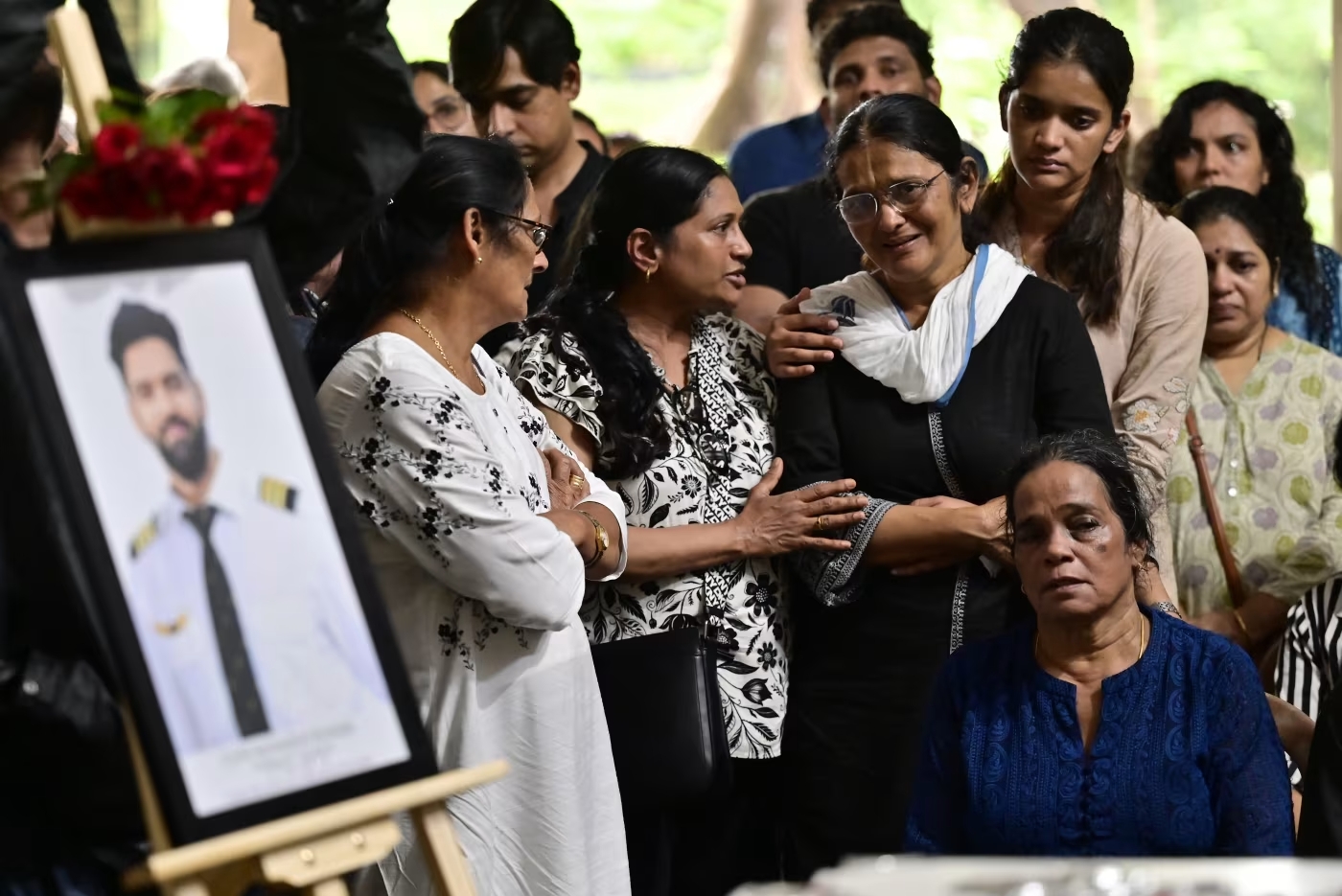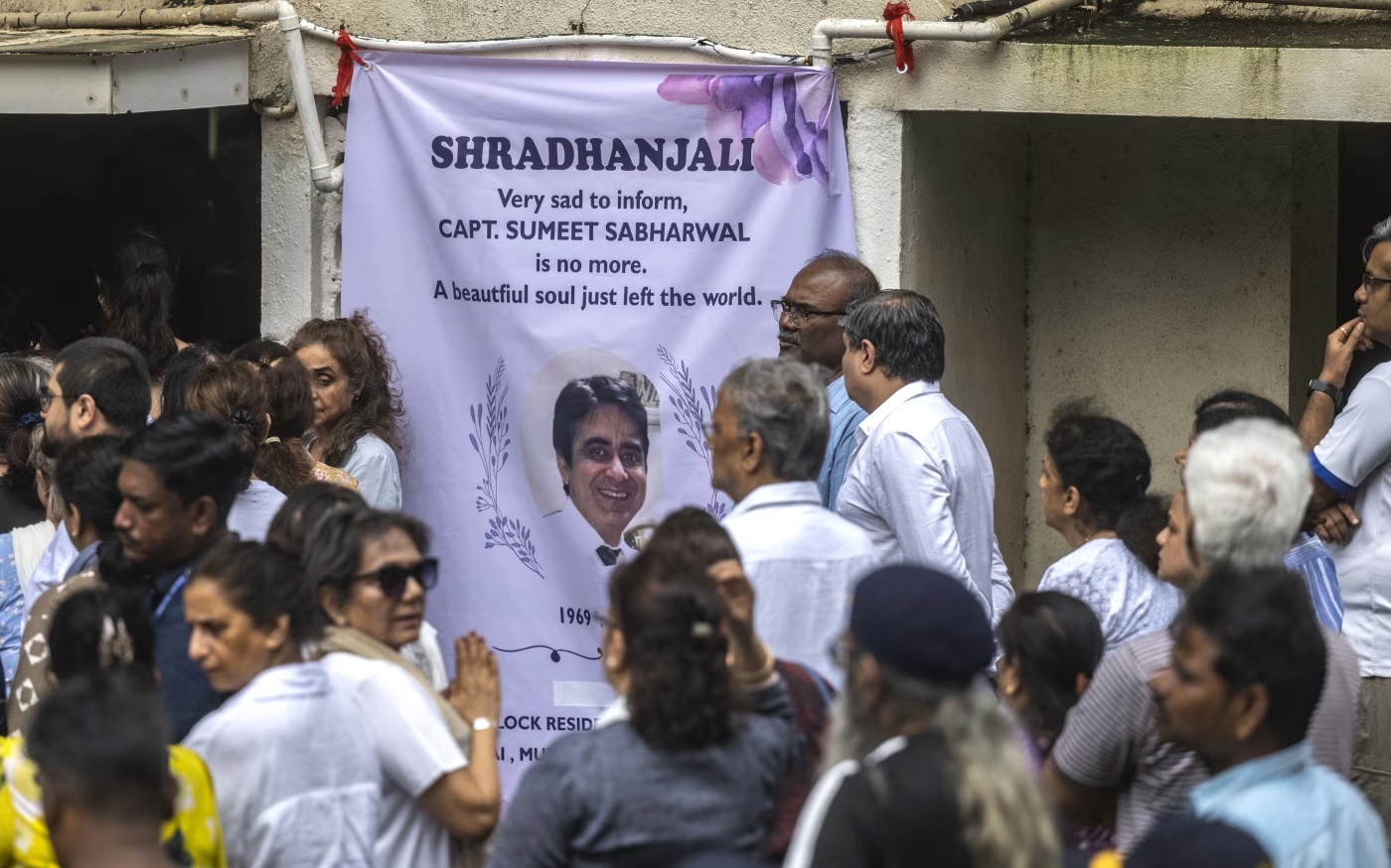Two sources briefed on the initial assessment of the evidence told the Wall Street Journal on 16/7 that the cockpit voice recorder captured the captain moving the fuel control switches for both engines from the "run" position to "cut-off." These sources are familiar with the initial U.S. official review of evidence collected from the Air India crash.
The first officer, who was piloting the Boeing 787 Dreamliner, asked the more experienced captain why he had moved the switches. The first officer expressed surprise and then panic, while the captain appeared to remain calm.
The captain, Sumeet Sabharwal, 56, had 15,638 flight hours, while the first officer, Clive Kunder, 32, had 3,403.
Neither India's Directorate General of Civil Aviation nor Air India has commented on the report.
 |
Friends and family at the funeral of first officer Clive Kunder in June. Photo: Hindustan Times |
Friends and family at the funeral of first officer Clive Kunder in June. Photo: Hindustan Times
Air India flight AI171, carrying 230 people, crashed seconds after takeoff from Ahmedabad airport in Gujarat state on the afternoon of 12/6. The plane plunged into a medical college dormitory near the airport. The crash killed 260 people, including 241 on board and 19 on the ground. Only one passenger, a British citizen, survived. Dozens of people on the ground were injured.
India's Aircraft Accident Investigation Bureau (AAIB) released a preliminary report on 11/7 stating that the fuel control switches for both engines were moved from "run" to "cut-off," one second apart.
According to the black box data, this occurred just seconds after the plane left the ground, causing the engines to lose thrust. The cockpit voice recorder captured one pilot asking why the other had cut off the fuel, with the other pilot responding that they had not. The report did not identify which pilot was the captain and which was the first officer.
 |
Relatives and neighbors mourn captain Sumeet Sabharwal in June. Photo: Hindustan Times |
Relatives and neighbors mourn captain Sumeet Sabharwal in June. Photo: Hindustan Times
The report did not explain why the fuel switches were moved, or whether it was accidental, deliberate, or a technical malfunction. However, the WSJ’s sources, including US pilots and safety experts following the investigation, said the details in the preliminary report suggest the captain moved the switches.
The fuel control switches regulate the flow of fuel to the engines. In the "run" position, the fuel valves are open, supplying fuel to the engines. When moved to "cut-off," the fuel supply is stopped, and the engines shut down.
Boeing designed guards on either side of the switches. Each switch has a spring-loaded locking mechanism that keeps it in a fixed position. To move a switch, the pilot must grip the knob, pull it up with some force, and then move it. The "run" and "cut-off" positions are clearly marked in capital letters on the control panel.
 |
The location of the fuel control switches on a Boeing 787. Graphic: Seattle Times |
The location of the fuel control switches on a Boeing 787. Graphic: Seattle Times
Aviation safety experts say it is almost impossible for a pilot to accidentally move both switches simultaneously.
Campbell Wilson, Air India's chief executive, this week urged employees to avoid jumping to conclusions about the accident, saying the investigation is "far from complete."
Huyen Le (According to WSJ, Reuters)












